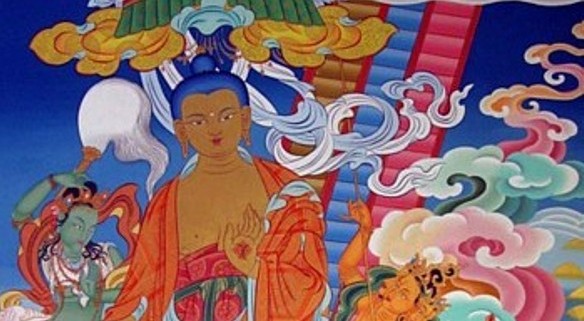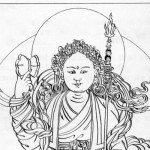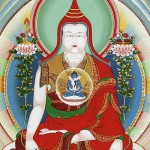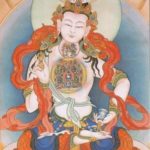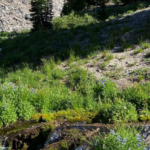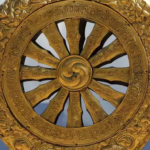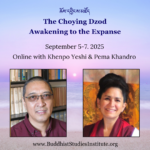In the Buddha’s life stories this time celebrates the time when the Buddha came back down to earth after a period of teaching in the higher realms. It is commemorated on the ninth lunar month and the twenty second day, according to the Tibetan Calendar.
The tradition says that Buddha had gone to the higher realms to liberate his mother in order to repay her kindness for giving him life. He taught gods and other divine beings. But, then, because his student, Maudgalyāyana, called him back and asked him to teach, the legends say that the Buddha returned via a golden jeweled ladder.
Lha Bab Duchen is one of the major holidays celebrating the life of the Buddha. The first is the Buddha’s birthday, enlightenment and anniversary of his death – which are celebrated on one day called Saga Dawa. The second is Chokhor Duchen, the first turning of the wheel of the dharma. A third is Lha Bab Duchen, Buddha’s descent to teach our world. There are other major holidays and festivals which vary according to tradition and country.
On Lha Bab Duchen, the effects of practices and actions are thought to be multiplied. In a practical sense, Buddhists all over the world are doing positive actions and engaging in practices – so by joining in on this practice one is connecting with a great momentum of enlightened intent. Most important is to have kindness and compassionate actions on this day and every day.
We can also see the Buddha’s descent as a repetition of the great theme of descent in Buddhist meditation practice, in which higher knowledge manifests here on earth. On a poetic level, this image of goodness descending upon us reminds me of a major feature of Vajrayana meditation practices. There are many practices that consist of deliberately visualizing blessings, goodness, purification, healing energy coming down and washing over us. Though the practices vary and come with details and mantras specific to the type of practice, the overall theme is visualization as light coming down from above and washing over the body until it is filled with a sense of light. It is a symbol of something vast and profound coming down to uplift our experience and remind us of a sense of the sacred.
Visualization of light and wisdom descending down on us is a major feature of Vajrayana meditation. Visualization is something we do all the time, imagining all the things we have to do, imagining our worst fears, replaying mistakes, visualizing what we want to eat, visualizing memories. That is the hallmark of Tibetan Yoga practices and Vajrayana in general – we are using faculties and modes of experience that are happening all the time – breathing, dreaming, visualizing, imagining, feeling emotions… However usually these mental images take place according to conditioned scripts and unconscious habits. In Vajrayana we train our minds so that we use imagery and visualization to cultivate states of clarity, presence, inspiration and loving compassion. We can even think of Vajrayana as a language made up of images and symbols that point to Buddha-nature. Through meditation practices, we are teaching our mind this language. One of the major features throughout many Vajrayana meditation practices is the descent of blessings and the descent of light.
See Pema Khandro’s other Lha Bab Duchen post – to learn about how to celebrate this Buddhist Holiday.
Here is a favorite image of the Buddha descending to earth for Lha Bab Duchen! This image is a traditional one for LhaBabDuchen. It shows the Buddha descending down into a heavenly staircase.
I found this beautiful image here

